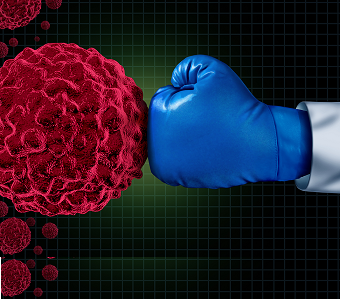In a prior note, we covered the impact that GLP-1 drug class would have on related markets. On this note, we’ll focus on NASH (now commonly referred to as MASH - metabolic dysfunction-associated steatohepatitis). This fatty liver disease is caused by excess fat cells. Chronic inflammation causes progressive liver damage, most often associated with overweight, high blood lipids and high blood sugar. So, it’s only logical that GLP-1 drugs would have an impact. The data isn't as clear.
In February, Eli Lilly said its highly popular drug tirzepatide (GLP-1/GIP) used for weight loss and diabetes showed promise as a treatment for fatty liver disease in a Phase 2 trial with 190 adults that had MASH with stage 2 or 3 fibrosis. All doses met primary endpoint of absence of MASH with no worsening of liver histology.

Lilly, did however mention that the secondary endpoint of decrease in fibrosis by at least one stage with no worsening of MASH on liver histology was clinically meaningful across doses. Clinically meaningful, not statistically significant. So, it seems tirzepatide has LITTLE real impact on fibrosis.
A few weeks later, Boehringer Ingelheim & partner Zealand announced Phase 2 data for their GLP-1/glucagon agonist survodutide. In addition to achieving primary MASH endpoint, liver biopsies also showed survodutide met secondary goals, including measures of fibrosis. Boehringer released no specifics about the fibrosis measures other than to say they were statistically significant.
Why is Fibrosis Important?
Fibrosis is the scarring that is a hallmark of chronic liver disease. 25% of Americans (83 million) are suspected to have a fatty liver, however the vast majority does not have any liver injury. About 15% (13 million) of this patient population has fat buildup in the liver that leads to inflammation and scarring (“fibrosis”).
The stages of NASH-associated fibrosis range from F0 (without fibrosis) to F4 (cirrhosis). See below.

Losing weight can help reduce fat, scarring, and inflammation in the liver. As a result, it is believed that weight loss drugs will eat into NASH without fibrosis (F0) and maybe NASH with mild fibrosis (F1 & F2) markets. This leaves F3 and F4 stages for NASH companies, cutting the addressable population & market from 13M to 3.3M. This is what the market is predicting. Whether it will actually play out like this is to be determined.
MASH Names Have Reported Fibrosis Improvement
Last week Akero (AKRO) reported impressive fibrosis improvement among patients with F2-F3, including advanced F3 fibrosis. The 50mg dose showed that 75% of patients demonstrated ≥1 stage improvement in fibrosis without worsening of MASH, approximately three fold the placebo rate (24%).

As seen above, Akero has topped other MASH players, as well as the GLP obesity companies when it comes to fibrosis improvement. This trend for Akero was also seen with ≥2 improvement in fibrosis, which beat out other players, including GLP-1s that have reported this data.

There was also a statistically significant fibrosis improvement among F3 patients, which have historivally been the most difficult to reverse fibrosis for. This F3 patient improvement and rates of ≥2 improvement in fibrosis is what has separated Akero from GLP-1 class in MASH.

Although AKRO’s data was in a small Phase2, it proved to be impressive enough to raise $366M. Another MASH player, Madrigal (MDGL) will have a PDUFA for their drug resmetirom. It’s likely that MDGL has a two year commercial head start over Akero, but data for Akero’s efruxifermin has reported superior fibrosis efficacy.
What Does This All Mean for MASH?
MASH-specific treatments, like MDGL/AKRO/ETNB will need to differentiate themselves from GLP in fibrosis improvement. MASH’s pathological hallmarks include chronic inflammation, fibrosis & cirrhosis of the liver. GLP-1s have not demonstrated benefit on these endpoints. At least not yet.
In a Phase 2 study, semaglutide was tested on F1, F2 and F3 stage patients and demonstrated a significantly higher percentage of patients had NASH resolution. However, it did not show a significant difference in the percentage of patients with an improvement in fibrosis stage (see above images for NOVO).
It’s likely that a combination of off-label usage of GLP-1 and MASH-related therapies will be used to augment responses. As a result, GLP-1 could obviate, but not replace, the need for NASH-related therapies in F1 and F2 stages. However, this is TBD. Additionally, not all NASH patients are obese (BMI >30), so GLP-1 won't apply to this subgroup. The 3.3M MASH + F3/F4 fibrosis are not impacted by GLPs.
As it stands, GLP-1 will compete with the existing MASH-related therapies in MASH without fibrosis. Earlier F1 & F2 stages of fibrosis are TBD as more data is needed from Boehringer’s GLP/glucagon. This 9.7M population, which has been written off by the market as taken by GLPs, is actually up for grabs by MASH players.
PropThink contributors do not hold any positions in the companies mentioned
Access This Content Now
Sign Up Now!




